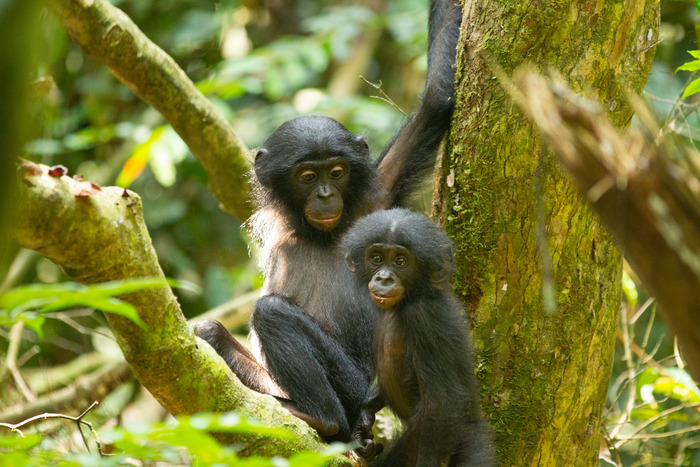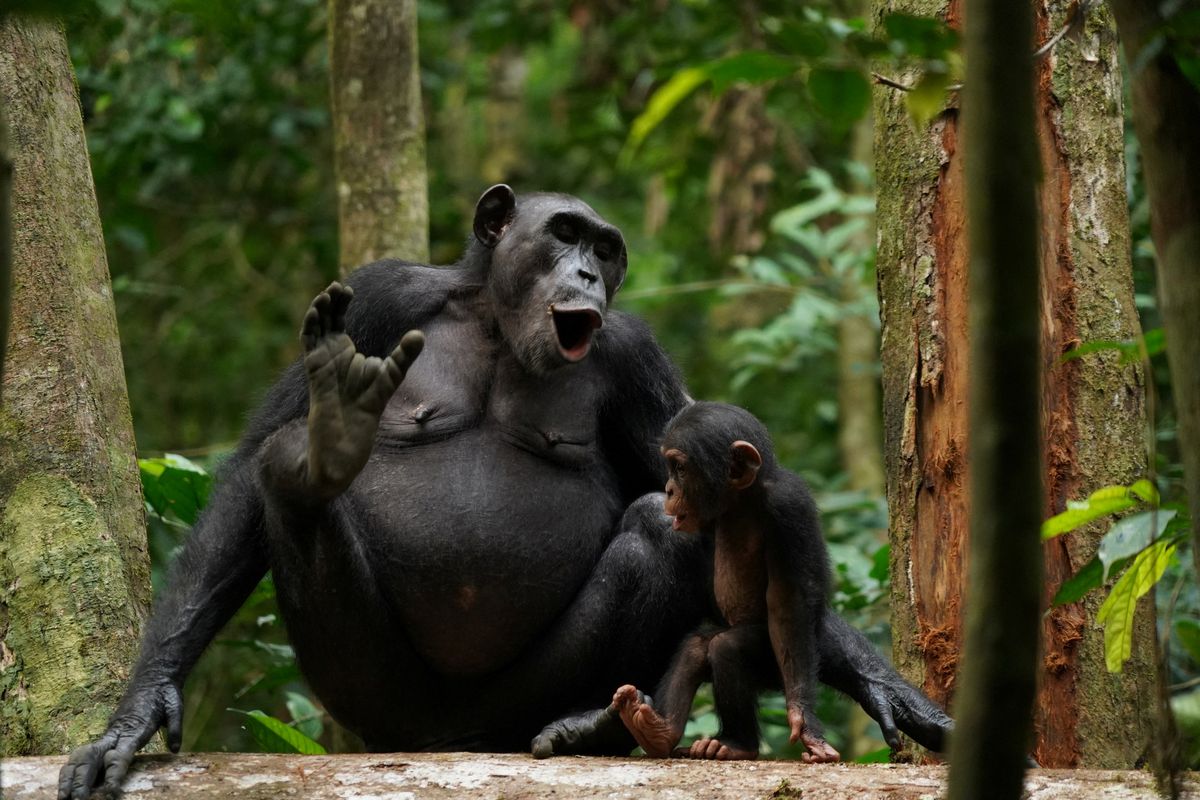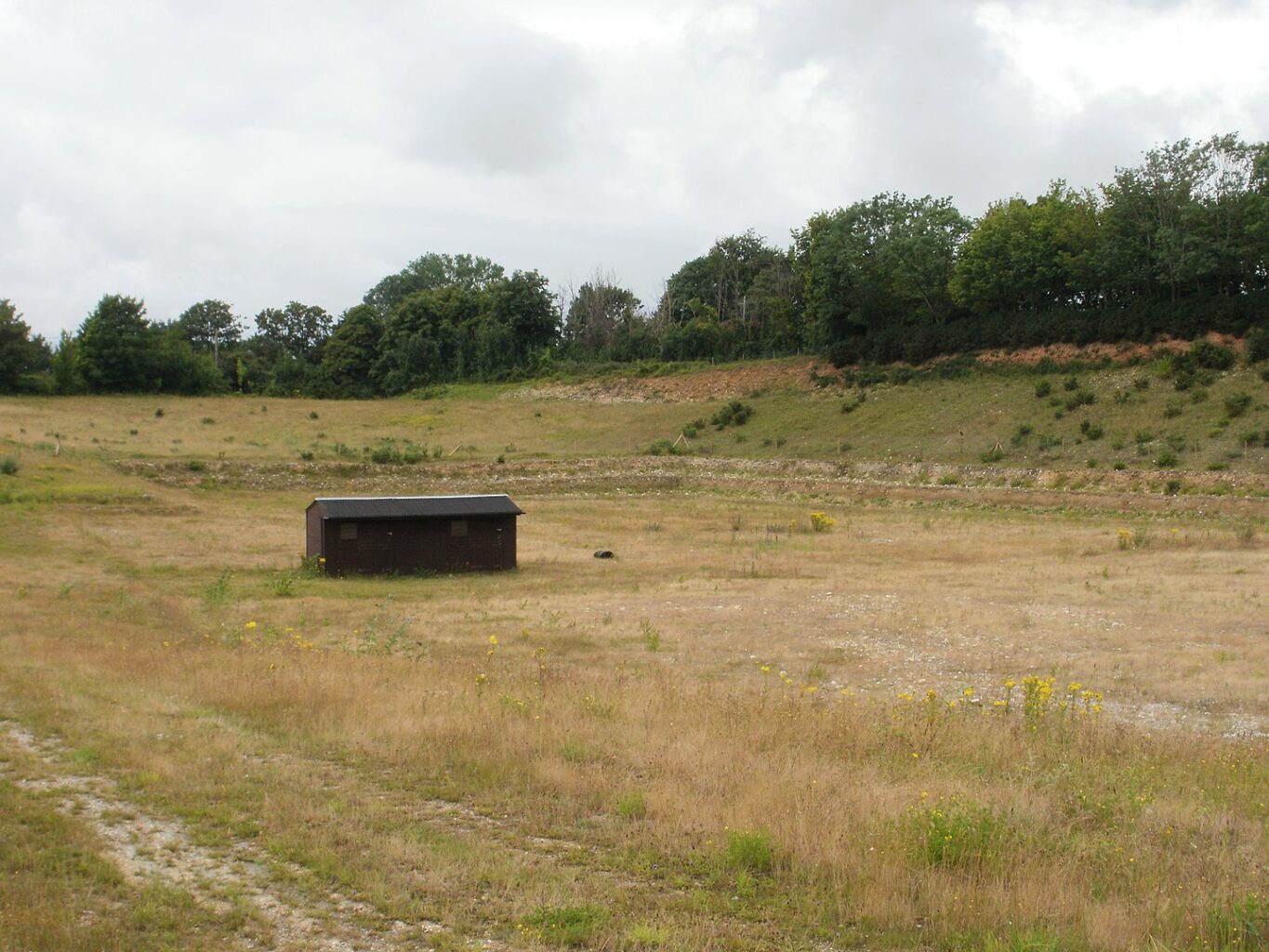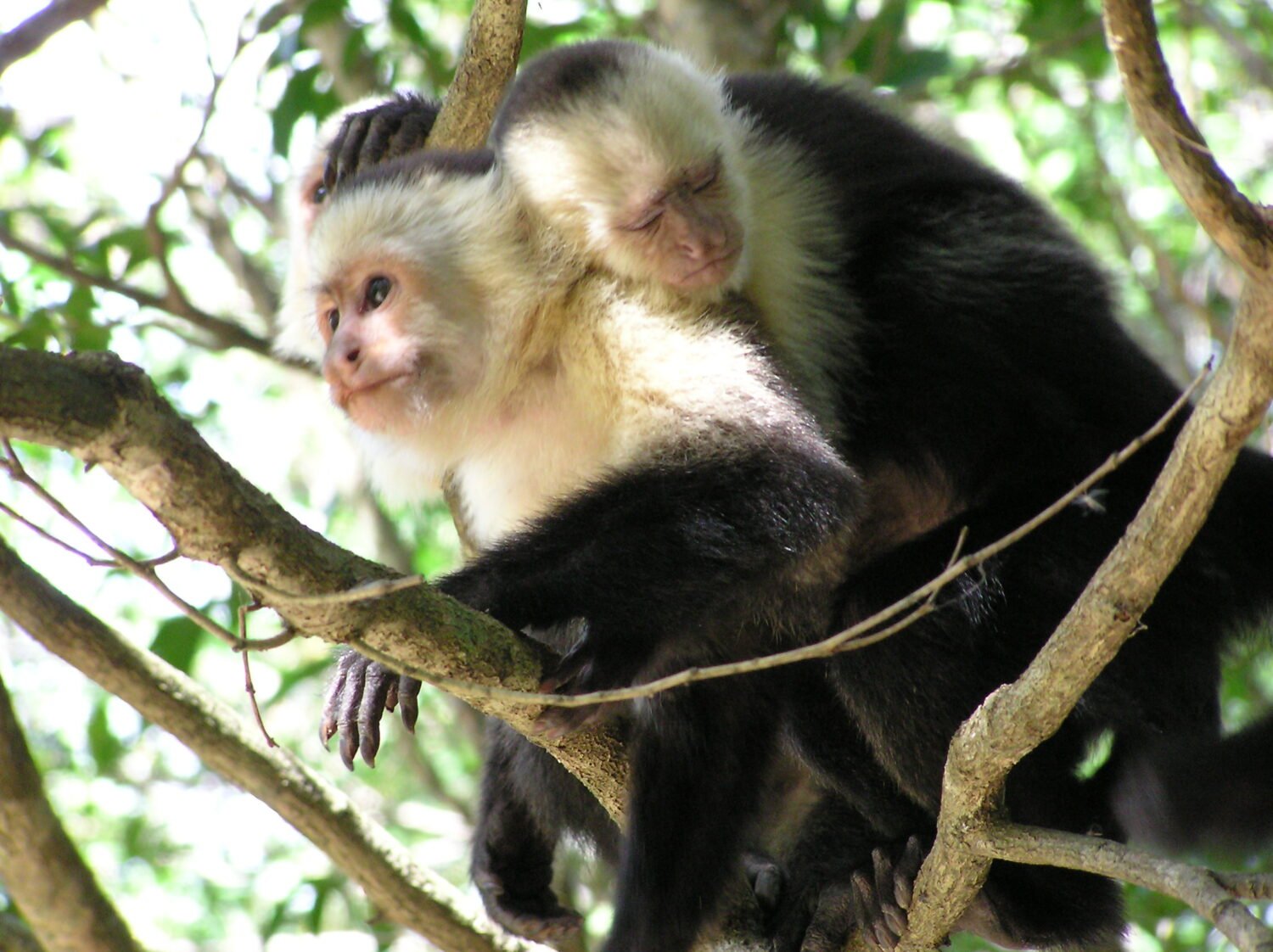Research Highlights
Every month, Leakey Foundation grantees publish research that helps us understand humanity’s past, present, and future.
Read on to learn about new discoveries made possible by generous Leakey Foundation supporters like you! All of the articles below are open-access and free to read.

The birth of a new sibling causes a long-lasting stress reaction in young bonobos
Humans aren’t the only ones that sometimes struggle to welcome a new sibling. New Leakey Foundation-supported research examines the behavioral and physiological responses of wild bonobos to the birth of a younger sibling.
Working with an international research team, Verena Behringer, a scientist at the German Primate Center (DPZ) – Leibniz Institute for Primate Research in Göttingen, examined various markers in the urine of wild bonobos (Pan paniscus). The researchers found that the birth of a second infant resulted in a five-fold increase in the stress hormone cortisol and a reduced immune response in the older sibling. The physiological changes were detectable up to seven months after birth and were independent of the usual weaning processes the young bonobos experience.
The findings contribute to our understanding of the effects of a major life history transition in one of our closest living relatives. An important strength of this article is the novel use of a longitudinal dataset that incorporates both behavioral and physiological measures.
Verena Behringer, Andreas Berghänel, Tobias Deschner, Sean M Lee, Barbara Fruth, Gottfried Hohmann (2022) Transition to siblinghood causes a substantial and long-lasting increase in urinary cortisol levels in wild bonobos eLife 11:e77227

Do chimpanzees have local dialects?
Vocal learning, the ability to modify the acoustic structure of vocalizations based on social experience, is a fundamental feature of speech in humans. Songbirds and whales also demonstrate the capacity for vocal learning. What about our primate relatives? Evidence for vocal learning has been reported in chimpanzees (Pan troglodytes), for example, in the form of regional variation (“dialects”) in “pant-hoot” calls.
To learn more about the extent of regional variation in chimpanzee calls, researchers analyzed pant-hoots from chimpanzees in the neighboring Kasekela and Mitumba communities at Gombe Stream National Park, Tanzania, and the geographically distant Kanyawara community at Kibale National Park, Uganda. The team found that individuals varied a lot in their vocalization, but there were no statistically significant differences between the neighboring communities at Gombe or among geographically distant communities. Furthermore, the researchers found differences among individuals in all communities. They concluded that the variation in chimpanzee pant-hoots reflected individual differences, rather than group differences.
Desai, N. P., Fedurek, P., Slocombe, K. E., & Wilson, M. L. (2022). Chimpanzee pant-hoots encode individual information more reliably than group differences. American Journal of Primatology, 84, e23430.

Comparing the Boxgrove and Atapuerca fossil hominins
Boxgrove is a famous fossil site in Sussex, where the oldest fossil hominin in England was found. The fossil material from Boxgrove consists of a partial left tibia and two incisors from a single adult individual known as “Boxgrove Man” and dated at around 480,000 years old. Researchers wanted to know more about how this fossil individual might compare or relate to other ancient populations in Europe living at the same time. They compared the fossils from Boxgrove to the large collection of fossils from a site called Sima de los Huesos in Spain to see what differences and similarities exist.
Annabelle L. Lockey, Laura Rodríguez, Laura Martín-Francés, Juan Luis Arsuaga, José María Bermúdez de Castro, Lucile Crété, María Martinón-Torres, Simon Parfitt, Matt Pope, Chris Stringer,
Comparing the Boxgrove and Atapuerca (Sima de los Huesos) human fossils: Do they represent distinct paleodemes?, Journal of Human Evolution, Volume 172, 2022.
Want to support research like this? Donate to The Leakey Foundation today.
